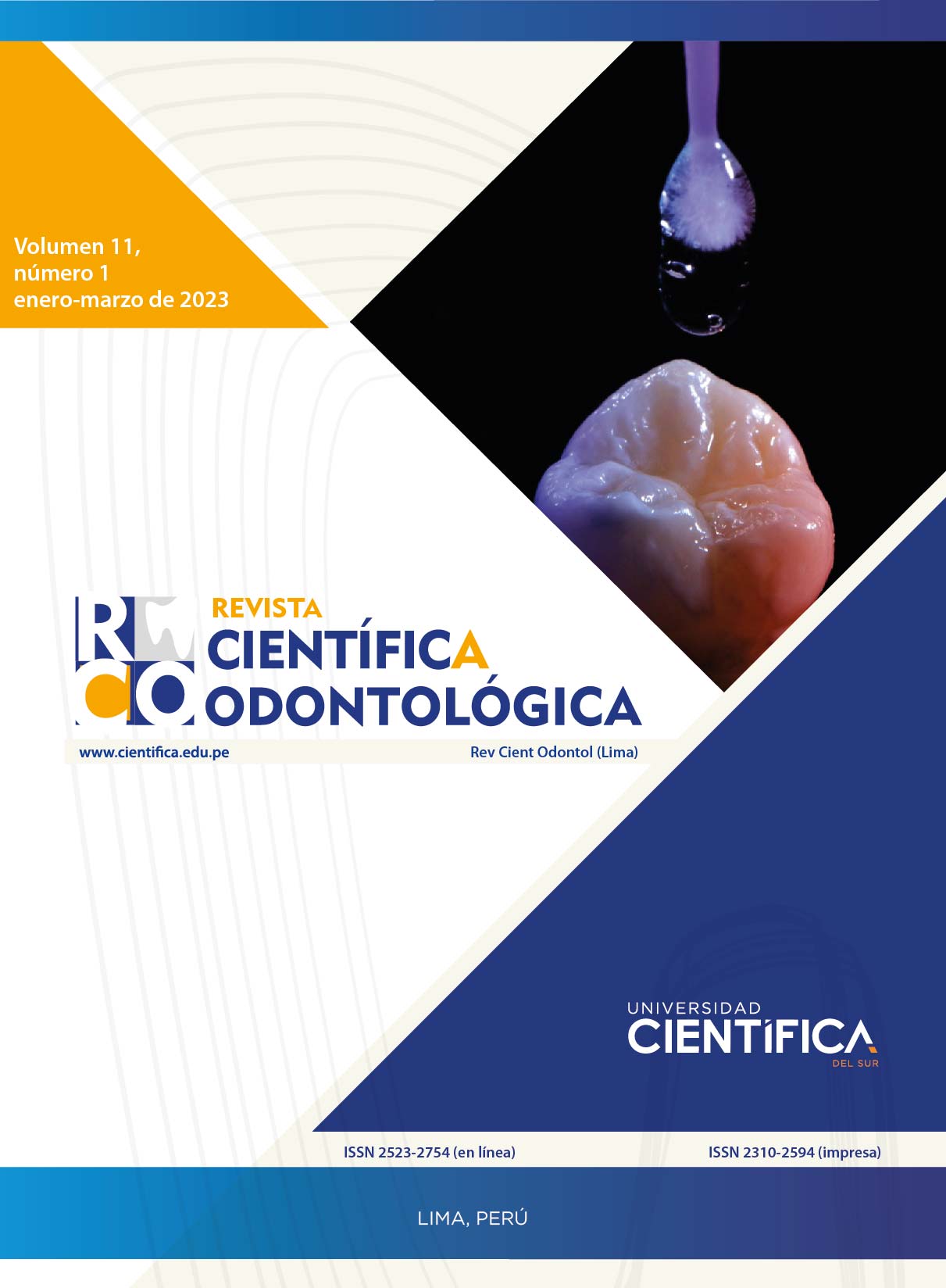Stress in an implant-supported unitary fixed partial prosthesis with different materials in the first lower premolar through finite elements
DOI:
https://doi.org/10.21142/2523-2754-1101-2023-140Keywords:
in silico, stress distribution, zirconia crown, disilicate crown, metal-ceramic crown, implantAbstract
AIM: To analyze stress in a metal-ceramic, zirconia and lithium disilicate implant-supported unitary fixed partial prosthesis in the first lower premolar through finite element analysis at a 500 N force. MATERIALS AND METHODS: Three study models were carried out, metalceramic, lithium disilicate and zirconium implant-supported crowns in the first lower premolar.The dental implant was made of titanium grade 5 based on the Bolt® model of UniDentalDirect with internal grooved connection (18 grooves) and the implant had a size of 11,0 x 4,5 mm, preformed abutment and integrated screw. The three designs had vertical and oblique (45°) forces applications at 500 N. The geometric modeling was performed with the SolidWorks® 2017 program and the results were obtained through the Von mises analysis using the CosmoWorks®2017 program. RESULTS: The lowest value of maximum stress on crown level, under vertical and oblique forces, was found in the lithium disilicate crown with 21,9 MPa and 33,2 MPa, and with a minimum difference with the zirconium crown with 22,1 MPa and 35,1 MPa; on the abutment level, the zirconium crown had the lowest value of maximum stress with 18,6 MPa and 28,1 MPa; at the screw level, there were no significant differences. CONCLUSION: Metalceramic, lithium disilicate, and zirconia crowns proved to be materials of good compressive and tensile strength, but it was concluded that the zirconia crown design generated lower overall stress.
Downloads
Downloads
Published
Issue
Section
License

Este obra está bajo una licencia de Creative Commons Reconocimiento 4.0 Internacional.












